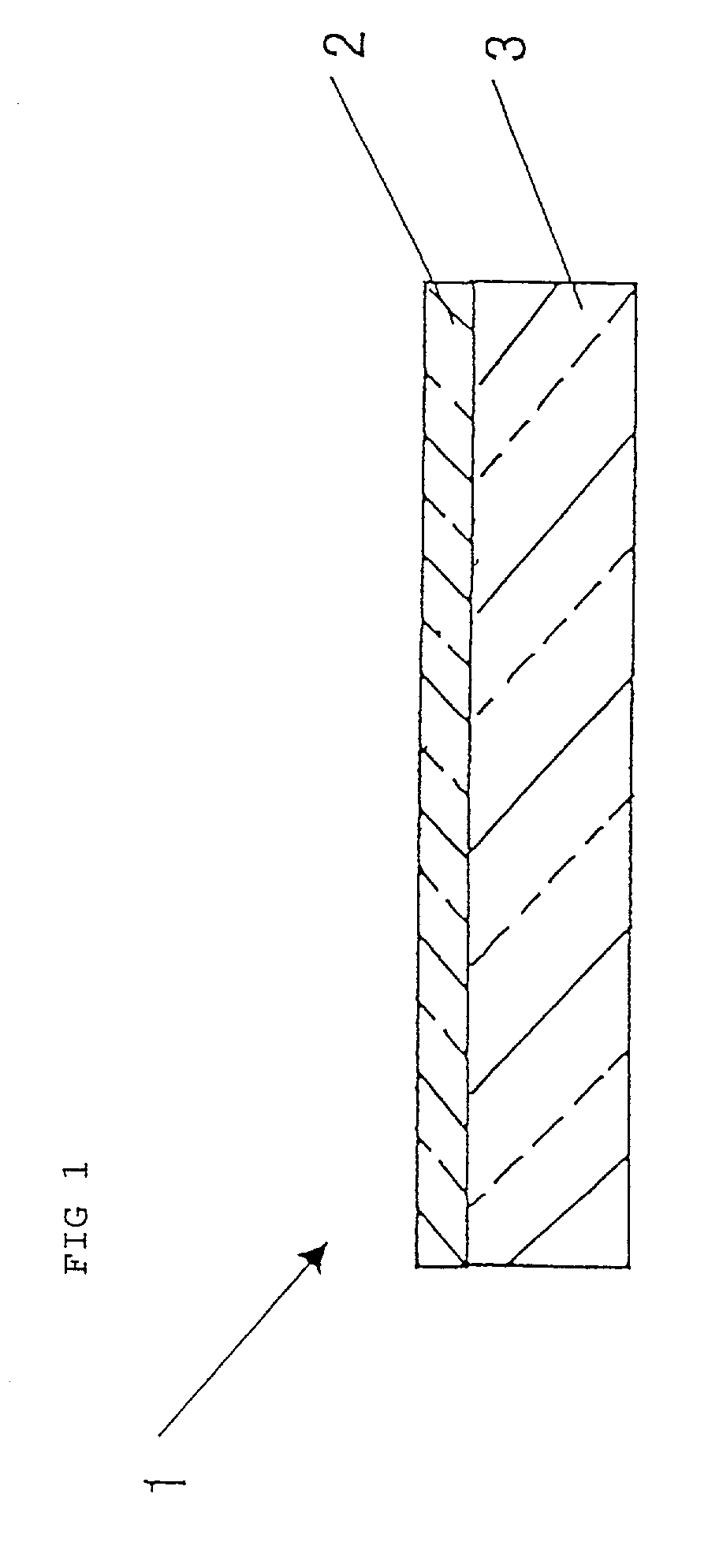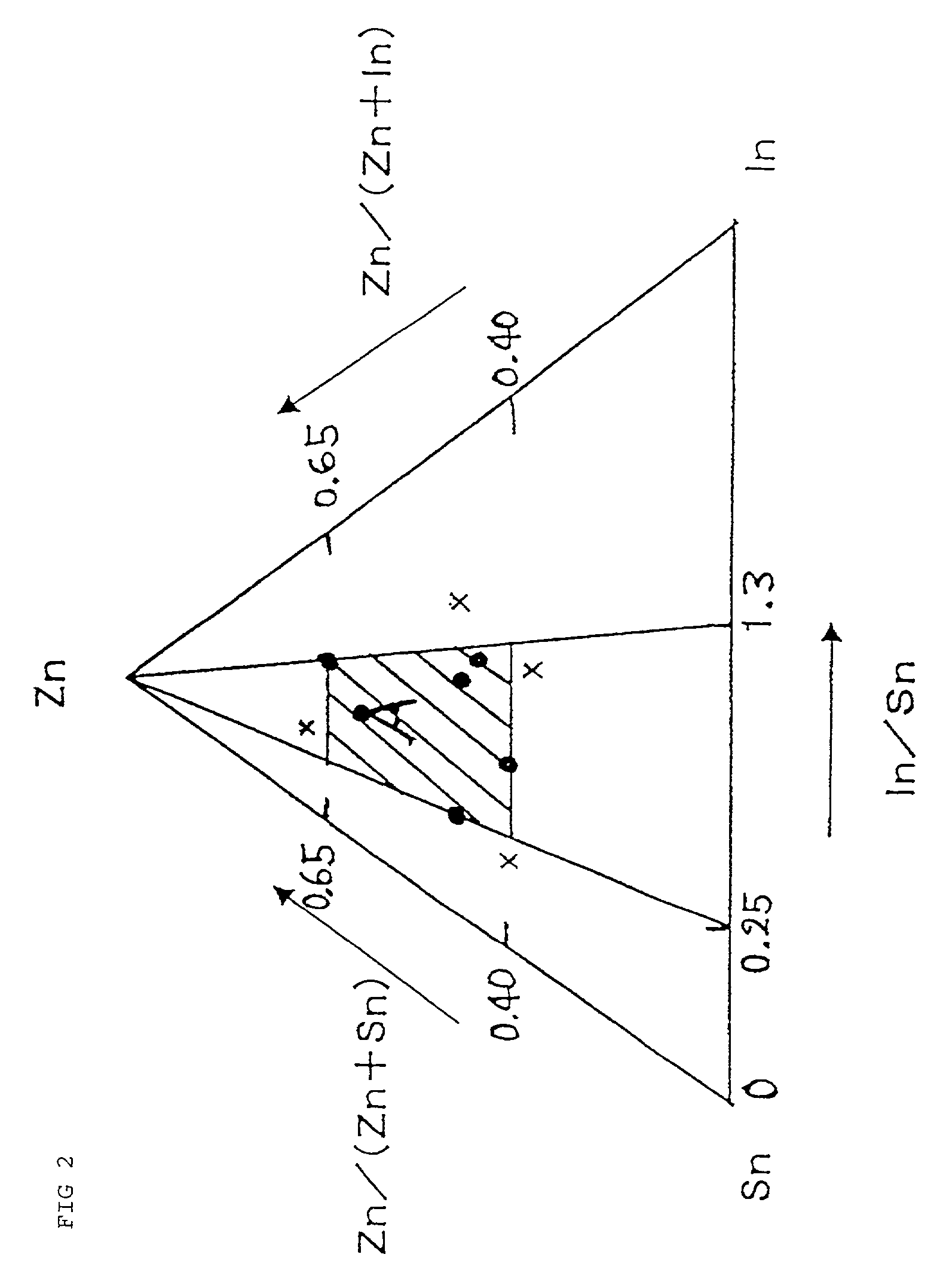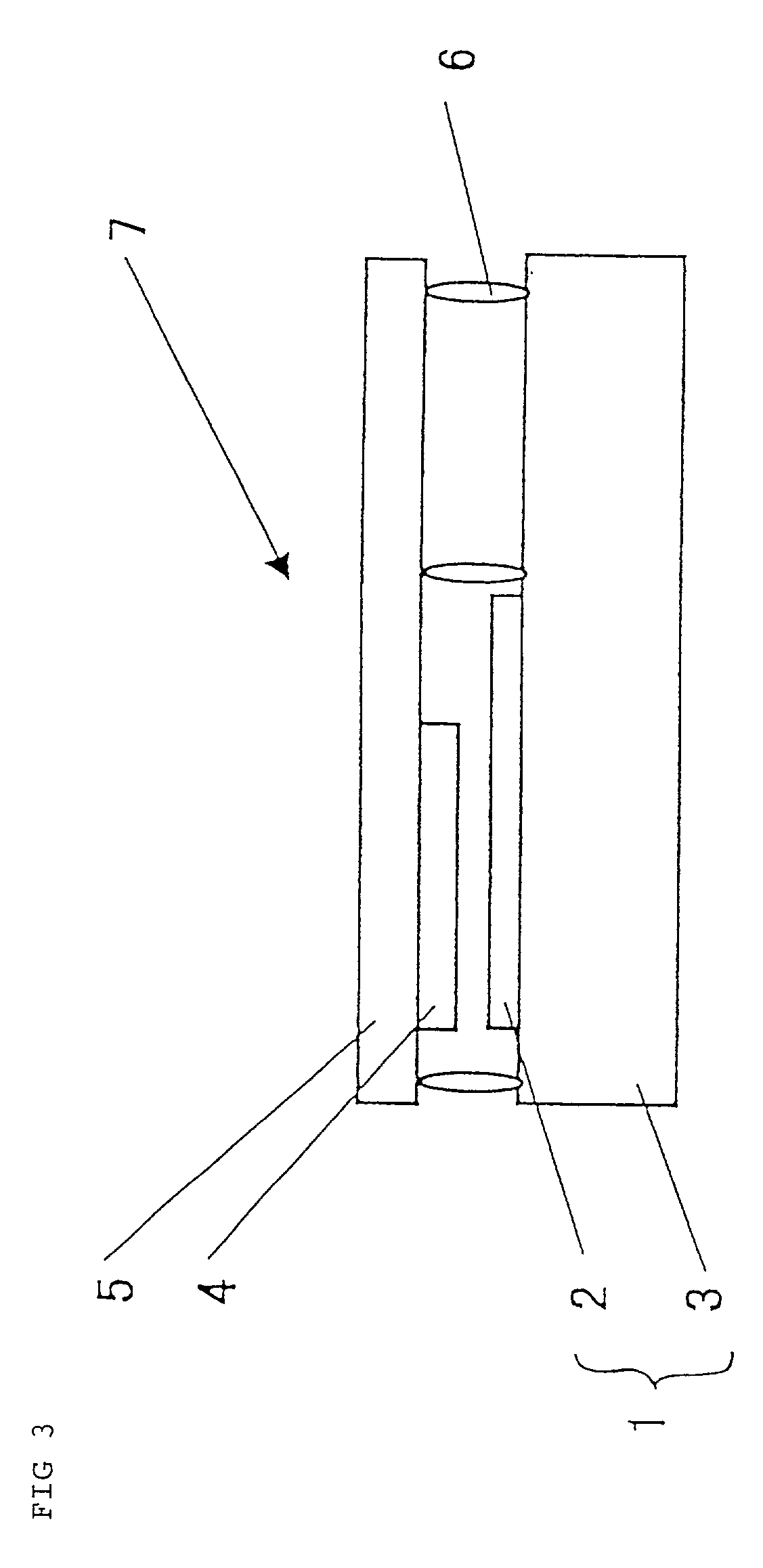Touch panel substrate having transparent conductive film
a technology of conductive film and touch panel, which is applied in the direction of conductive layers on insulating supports, instruments, optical elements, etc., can solve the problems of difficult to stably obtain a given transmittance, difficulty in obtaining reproducible resistance values, and unsuitable film for use as electrodes in transparent touch panels
- Summary
- Abstract
- Description
- Claims
- Application Information
AI Technical Summary
Benefits of technology
Problems solved by technology
Method used
Image
Examples
examples 2 to 6
[0070] A transparent conductive film was deposited on a glass plate in the same manner as in Example 1, except that the target composition was changed. As shown in Table 1, the samples thus obtained each had a moderate sheet resistance in the range of from 500 to 5,000 .OMEGA. and a transmittance of 90% or higher. The samples obtained in Examples 1 to 6 each combined a high transmittance, moderate sheet resistance, and satisfactory processability in electrode formation and was an especially preferred sample of the substrate according to the invention. These samples were rated as .circleincircle. in comprehensive evaluation.
examples 7 to 10
[0071] A transparent conductive film was deposited on a glass plate in the same manner as in Example 1, except that the target composition was changed. As shown in Table 1, the samples thus obtained each had a transmittance of 91%. However, the sheet resistances of the samples obtained in Examples 7, 9, and 10 were 320 .OMEGA., 220 .OMEGA., and 390 .OMEGA., respectively, which were slightly lower than the lower limit in the moderate-resistance range shown above. These films were found to be effective in conducting ON / OFF operations without fail although less effective in power saving. On the other hand, the sample obtained in Example 8 had a transmittance of 92%, which was not lower than the transmittance of the glass plate, and had a sheet resistance of 9,800 .OMEGA., which was slightly higher than the upper limit in the desirable moderate-resistance range shown above. However, this sample was able to secure electrical connection upon contact of the transparent electrode in practic...
PUM
| Property | Measurement | Unit |
|---|---|---|
| Thickness | aaaaa | aaaaa |
| Percent by atom | aaaaa | aaaaa |
| Fraction | aaaaa | aaaaa |
Abstract
Description
Claims
Application Information
 Login to View More
Login to View More - R&D
- Intellectual Property
- Life Sciences
- Materials
- Tech Scout
- Unparalleled Data Quality
- Higher Quality Content
- 60% Fewer Hallucinations
Browse by: Latest US Patents, China's latest patents, Technical Efficacy Thesaurus, Application Domain, Technology Topic, Popular Technical Reports.
© 2025 PatSnap. All rights reserved.Legal|Privacy policy|Modern Slavery Act Transparency Statement|Sitemap|About US| Contact US: help@patsnap.com



